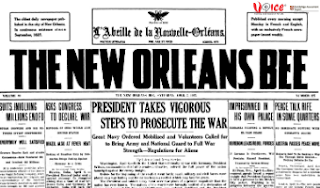Why does Vocabulary Matter
A good vocabulary is an important building block for helping language learners to
communicate effectively, but it’s also essential to school performance more
widely. Research consistently finds that the extent of a child’s vocabulary
knowledge relates strongly to their overall academic success - a child’s
vocabulary when they are five years old can tell us how well they may do at
school at 11.
Vocabulary and spoken language in
general, is a key foundation for literacy. If children who have just started
learning to read know the words they are reading, they can more easily and
quickly sound out, read, and understand them, as well as comprehend what
they’re reading: a solid vocabulary is the bridge between phonics and reading
comprehension.
 |
| Vocabulary |
Vocabulary in Context
Teaching lists of words out of context
can be a starting point for observation, and for conversations about language
acquisition. But the emphasis for me should be on the use of vocabulary within
the context of the entire language system. It can’t sit in isolation.
Perceptions of Vocabulary Learning are also Contextually Driven
Conversely, many of the children in
the schools where I work come to school without what you might call “book” or
“academic” language, or conversational language. But within their homes and
communities, in their context, of course they have language! What these
children might lack is the language, or the so-called ‘cultural capital,’ to
access what teachers expect in school. That simply means you have to teach it.
Active Vocabulary
When it is about teaching vocabulary,
it is related to the acquisition of language. So we might begin exploring ideas
of phoneme correspondence, and expecting children to recognize a word – a task
which is very difficult for them if they don’t have the word in their active
vocabulary. If it’s not in their active vocabulary they have less idea of how
it might sound or where the emphasis or stress may come in the word: it remains
in effect a nonsense word, unless they have the skills to work out what it
means in the context of the surrounding text.
Measuring Vocabulary
In the classroom, vocabulary is
low-hanging fruit: easy to grasp and observe, it provides a ready insight into
some of the challenges that children can face as they learn. Yet while teachers
have a sense of what vocabulary is, whether that is accurate or not is a really
interesting question.
As a matter of fact, standalone
assessments that help a teacher look more closely at each different aspect of
literacy learning, might help in enabling students acquire a wider range of
vocabulary.
For example, we get children to spend
10 minutes with a paper and pencil and write down as many words as they know
how to spell. Statistical data says that the number of correctly spelt words
ranged from 3 to 118 over a group of around 200 children.
To understand what this tells us, we
need to think about what the task requires. The children have to recall words
they know how to spell: it isn’t the case that the child who only writes 8
words doesn’t know more just that they can’t write them down.
From the words that they do write, you
can begin to establish whether they have semantic networks, i.e. do they write
blue, yellow, red, or do they appear to choose words more randomly? This, in
turn, will have a bearing on their writing ability.
Understanding Assessment
We need to be aware of what
assessments can show us, and what they can’t. It is often assumed, for
instance, that the phonics screening check measures reading. But it doesn’t
measure reading; it measures one aspect of reading.
There are a lot of reading assessments
that are used all the way through school, to form the basis of judgments about
children’s attainment. But we need to think critically: what do these
assessments test? What does each really measure? Is the assessment a proxy, and
if so, is it an appropriate proxy for what we actually want?


Comments
Post a Comment